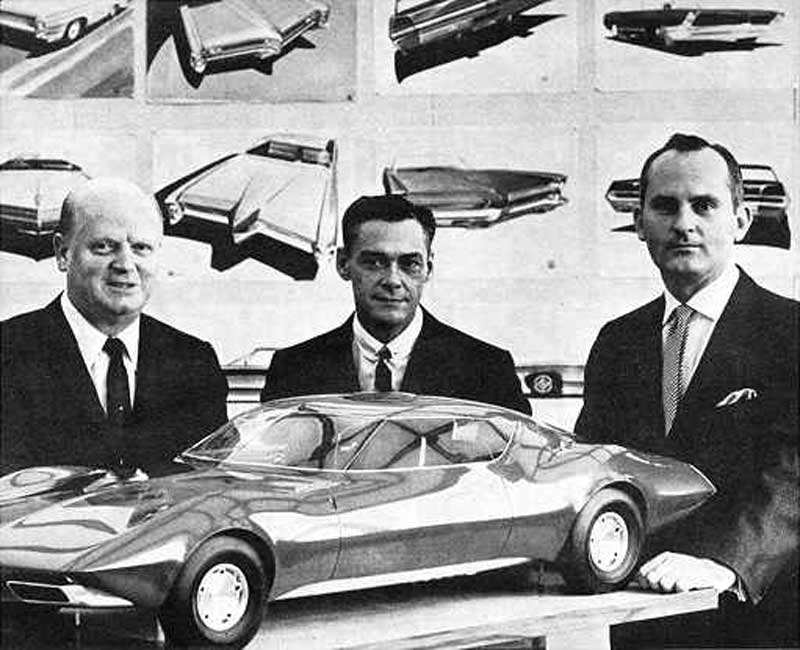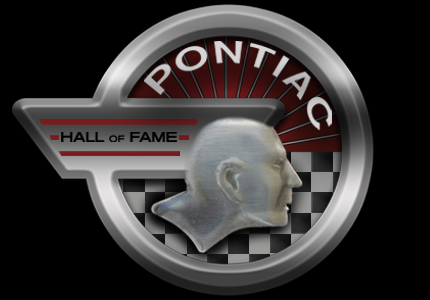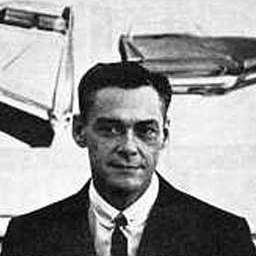Jack Humbert --- April 9, 1924 - March 1985
Times Nominated: 4
Nominated Year(s): 2019, 2021, 2022, 2023
Last Year of Eligibility: 2025
Category: Design
Where he led the design team that gave Pontiacs of the ’60s the leading edge in the art of automotive styling.
Jack was born April 9, 1924, in Canton, Ohio. He was drawn to the automobile at an early age, and purchased his first car at 16. After graduating from Middlebranch High School, Jack spent the next three years, 1943 to 1945, in the U.S. Army, serving in an armored division in the European theater. After World War II, he returned home to Canton. His illustrating talent led him to the Central Academy of Commercial Art in Cincinnati, Ohio, where, after graduating in 1948 with a degree in Automotive Design, he went to work for General Motors Styling as a junior designer.
For the next several years, Jack honed his skills and designed cars under such legendary design leaders as Harley Earl, then vice president of GM Design; as well as Bill Mitchell, who would become the next vice president of GM Design. Jack developed an eagle eye and the respect of his fellow team members working in both the interior and exterior design studios.
n March of 1959, at the young age of 34, Jack was promoted to chief designer for the Pontiac studio. This would forever change the direction of Pontiac’s design and image. The basic themes for the all-new ’61-’62 model years had already been selected and were well into development, having reached the full size clay-model stage by this time.
This gave Jack the opportunity to do what he did best: concentrate on the details. As a result, the ’61-’62 designs attained a new level of refinement that set a very high standard, even for GM.
This was a turning point for Pontiac, and in 1961, it moved into third place in sales behind Chevrolet and Ford. The Division’s styling was fresh and youthful, making it a design leader throughout the ’60s and well into the ’70s. The following are but a few of the many landmark models designed under Jack Humbert.
The ’63 Grand Prix Pontiac introduced a personal luxury car design that stunned the automotive industry: the award-winning Grand Prix. Though Humbert had a hand in the premier ’62 edition of the Grand Prix, the ’63 was the first car completely designed under his leadership where he won a Certificate Of Design Merit award from the Industrial Design Institute for its outstanding design.
The entire ’65 Pontiac lineup received the coveted Motor Trend Car of the Year Award; the major factor, “Design.”
GM told Jack’s team that they had to use the 67 Camaro to design the 67 Firebird. All they changed was the hood, the grilles and headlights, the front and rear bumpers, tail panel and taillights, as well as stamping six hash marks in the Camaro’s quarter-panels. Pontiac ended up with a very distinctive-looking car, definitely a more aggressive design than that of the Camaro.
The ’68 GTO was so revolutionary, it would change the way cars were designed forever. It was the first application of a flexible bumper that was integrated into the design of the body and painted body color. This new Endura bumper was made of a steel-reinforced rubber-like material developed by GM’s Inland Division. The ’68 was the first GTO to offer hide-a-way headlights and hidden windshield wipers.
This was then sent to the Pontiac production studio under Humbert’s guidance. “Jack took a good design and made it great, that’s what he was good at,” Bill Porter said. Many of the ’68 GTO design elements were copied by competitors on future vehicles. A quote from Motor Trend magazine, which named the ’68 GTO Car of the Year said, “Never before has an automobile been so successful in confirming the correlation between safety, styling, and performance as the ’68 GTO.”
Jack enjoyed pulling a studio chair up to the fullsize clay models and, working with his talented sculpting team, developing those surfaces and details that would make the Pontiacs stand out from the crowd when they showed up in the dealer showrooms.
One of Jack’s employees, Ben Harrison, of Engineering’s Special Projects Department had the idea of using a stretched version of the A-body chassis with a 118-inch wheelbase instead of the larger 122-inch B-body the GP had been built on. This gave the new A-special, or G-body, a long-hood, short-decklid proportion that was popular in the new pony cars. The ’69 Grand Prix was designed in just over a month, it was one of the fastest programs ever worked on.
The ’70 1/2 Firebird was all-new from the ground up, but this time Pontiac had input in the design process. The driver and engine were moved three inches back.
Pontiac and Chevrolet design studios went in different directions on the ’70 1/2 “F” car program, with Jack’s team winning the design battle and mastering the upper body that set the design direction for it. Pontiac’s newest visual element, the Endura bumper, pioneered on the ’68 GTO, played a major role in the styling of the all-new Firebird. The design team put together one of the most aggressive cars to ever roam the streets of America, the Trans Am. Its stripes, spoilers, and Shaker hoodscoop went on to identify the T/A for the rest of the decade. This basic design was so good it lasted 12 model years.
Humbert’s designs were a reflection of the man. He wasn’t flamboyant, but he dressed in tailored three-piece suits that were always impeccable. He was a true gentleman’s gentleman, with a great sense of humor and would not disagree simply for the sake of creating controversy. He knew the direction in which he wanted the design themes to go and would slowly develop the clay models until he had realized his vision. Bill Porter once said, “Jack was the iron fist in a velvet glove-he would take in everyone’s input and slowly move the clay model in just the right direction.”
The talent at the Division was not lost on the automotive press. These are just a few of the highlights of the many car lines and models that were designed under Jack Humbert’s leadership of the Pontiac Design studio. The Division received four Motor Trend “Car of the Year” awards in less than 10 years: ’59 Pontiac Motor Division, ’61 Tempest, ’65 Pontiac Motor Division, and the ’68 GTO. This achievement has never been matched by any automotive manufacturer in the history of the “Car of the Year” award, before or since. Pontiac could have easily won the COTY for the ’69 Grand Prix or the ’70 1/2 Firebird, as these were both standout cars, but the readers and writers may have cried foul for the Division’s already unprecedented four wins in nine years.
Regrettably, in March 1985, Jack’s life was cut short by leukemia, but he left a legacy of automotive design that is second to none in the Pontiac world. Pontiac owned the decade of the ’60s-it was its era.












